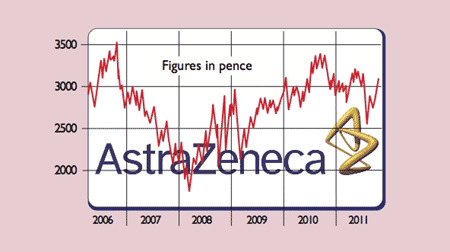
What is it?
AstraZeneca is a global pharmaceutical business focusing on six areas of healthcare: cardiovascular, respiratory and gastrointestinal diseases, infection, neuroscience and inflammation. Over half of its sales are derived from four key drugs: Crestor (anti-cholesterol), Nexium (acid reflux), Seroquel (schizophrenia) and Symbicort (asthma). Fourteen dedicated research and development (R&D) centres operate in eight countries. Sales were $33.2bn in 2010.
What is the company’s history?
The combined group was formed in 1999 via the merger of Sweden’s Astra AB and the UK’s Zeneca Group. Astra was formed in 1913, while Zeneca was demerged from ICI in 1993. The new company focused exclusively on pharmaceuticals after demerging Zeneca’s agrochemicals business and had a good track record of developing new drugs to offset the decline of previously profitable products. However, its recent R&D track record has been disappointing and the $15.2bn paid for vaccine maker MedImmune in 2007 now looks toppy. Despite an increasingly challenging environment, shareholders have received over $44bn in the form of dividends and share buy-backs since 2000.
Who runs it?
David Brennan has been in charge since 2006, having been chief executive of the North American operation. Martin Mackay heads up R&D and Simon Lowth is chief financial officer.
How’s trading?
Results for the third quarter to 30 September 2011 saw revenue increase by 4% to $8.2bn, with operating profit falling by2% to $3.2bn. Earnings per share increased by 14% to $1.71. Competition from generic drugs saw sales in the gastrointestinal and oncology sectors fall by 15% and 4% respectively. But strong sales of Crestor saw cardiovascular drug sales increase by 9%. Neuroscience sales increased by 2% and respiratory sales by 4% while infection sales fell by 21%.
What’s the outlook?
Ageing populations and the growth of emerging economies should in theory support growth. But governments – the main buyers – are looking to generic substitutes to reduce healthcare costs. R&D productivity is also under pressure as it takes more money to find the next profitable drug and key patents expire. However, dividends are likely to be maintained or increased in the short term, with surplus cash flow used to buy back shares.
The analysts
Of the 44 analysts surveyed by Bloomberg, ten say “buy”, 20 “hold” and 14 “sell”. The average price target is 3,157p – 4% above the current share price. Most bullish is SEB Enskilda with a 3,802p price target, whereas Nomura is most bearish with a 2,400p target. Our view: At 6.6 times prospective earnings and offering a 5.7% dividend yield, the market’s concerns about the company (particularly the loss of exclusive patents) look priced in. With lots of cash being returned to shareholders, we are buyers.
The numbers
Stockmarket code: AZN
Share price 3,025p
Market cap: £40.4bn
Net assets (September 2011) $24.1bn
Net cash (September 2011) $1.7bn
P/e (current year estimate) 6.6x
Yield (prospective) 5.7%
Director’s dealings
AstraZeneca’s rules say that each director must maintain a minimum personal shareholding of at least 500 shares, according to the firm’s 2010 Annual Report.
Apart from small purchases by non-executive directors and some trades relating to the firm’s share scheme, there has been limited activity of note over the last 12 months. The dates of director deals are shown on the chart, and
the biggest trades – in February and March 2011 – are set out in the table below.
Director and shares held
D Brennan: 74,157
S Lowth: 46,736